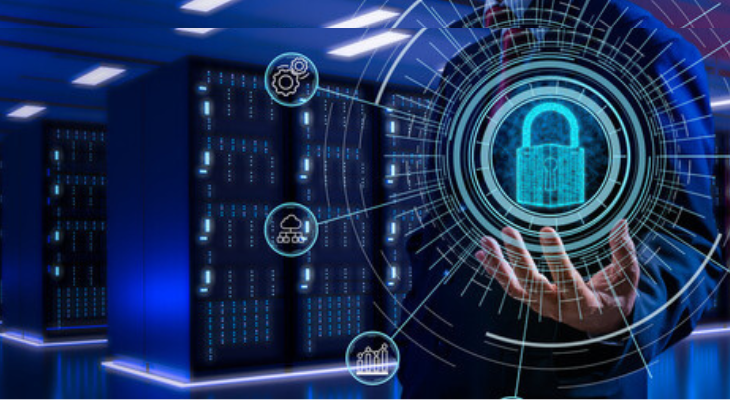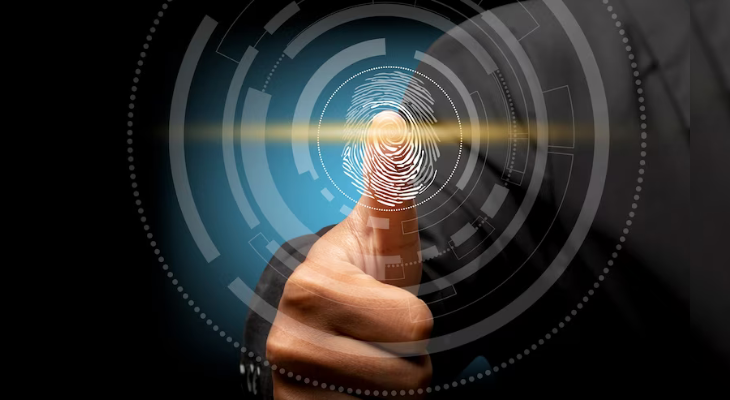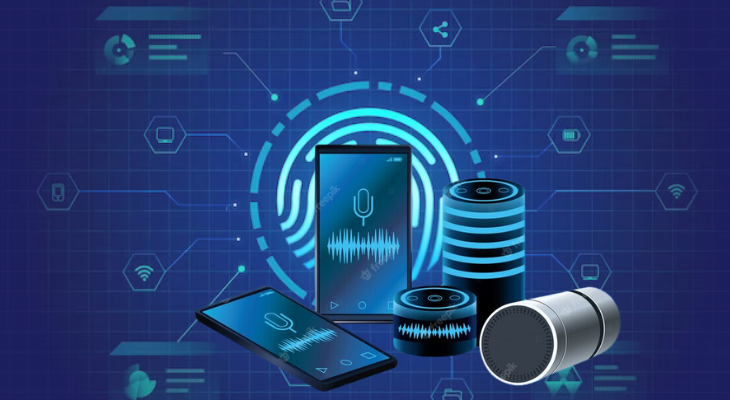Biometric Security Devices: Security for the Modern World

In today’s ever-evolving digital landscape, ensuring robust security measures is paramount. Biometric security devices have emerged as a cutting-edge solution, providing enhanced security and convenience. This article will delve into the world of biometric security devices, their types, applications, advantages, limitations, implementation steps, FAQs, and future trends.
I. Types of Biometric Security Devices
Biometric security devices encompass a range of technologies that verify an individual’s unique physiological or behavioural traits. Let’s explore the most prevalent types:
- Fingerprint Recognition Devices:
Fingerprint biometric devices, such as fingerprint scanners, are widely used due to the uniqueness and convenience of fingerprints as identifiers. They analyze the patterns and ridges on an individual’s fingertips for accurate identification.

2. Iris Recognition Devices:

Iris biometric devices utilize the distinct patterns in an individual’s iris to authenticate their identity. Iris scanners employ advanced algorithms to capture high-resolution images of the iris, offering a highly accurate and secure means of identification.
3. Facial Recognition Devices:

Facial biometric devices leverage facial recognition systems, which analyze facial features, contours, and measurements. These devices have gained popularity in various applications, including access control, surveillance, and personalized user experiences.
4. Voice Recognition Devices:

Voice biometric devices employ voice recognition systems to authenticate individuals based on their unique vocal characteristics. By analyzing factors such as pitch, tone, and rhythm, these devices provide secure voice-based identification.
II. Applications of Biometric Security Devices
Biometric security devices find diverse applications across several sectors, enabling robust security and seamless user experiences:
- Access Control Systems: Biometric access control devices, including biometric devices for door access, offer secure and efficient entry management. They eliminate the need for physical keys or access cards, preventing unauthorized access and enhancing overall security.
- Time and Attendance Tracking: Biometric time and attendance systems provide accurate and tamper-proof employee tracking. These devices streamline attendance management, reducing administrative burden and enhancing productivity.
- Financial Security: Biometric authentication in banking and payment security devices offer heightened security in financial transactions. By using unique biometric markers, such as fingerprints or iris patterns, these devices protect against identity theft and fraud.
III. Advantages and Limitations of Biometric Security Devices
Biometric security devices offer numerous advantages, but they also have certain limitations to consider:
1. Advantages:
- Enhanced Security: Biometric devices provide a higher level of security compared to traditional identification methods, as physiological or behavioral traits are difficult to forge or replicate.
- Convenience and User-Friendliness: Biometric authentication eliminates the need to remember passwords or carry physical tokens, offering a seamless and user-friendly experience.
2. Limitations:
- False Acceptance and Rejection Rates: Biometric devices may have false acceptance (incorrectly granting access to unauthorized individuals) and false rejection (incorrectly denying access to authorized individuals) rates, albeit at low levels.
- Privacy Issues: The gathering and archiving of biometric information raises privacy issues. However, reputable biometric systems adhere to strict data protection regulations.
IV. Features of Biometric Security Devices:
- Accurate Identification: Biometric security devices utilize unique physiological or behavioral traits to accurately identify individuals, ensuring reliable authentication and access control.
- Enhanced Security: Biometric markers, such as fingerprints, iris patterns, or voice characteristics, are difficult to replicate, providing a higher level of security compared to traditional methods like passwords or access cards.
- Convenience and User-Friendliness: Biometric authentication eliminates the need to remember passwords or carry physical tokens, offering a seamless and user-friendly experience. Users can simply present their biometric traits for quick and hassle-free verification.
- Tamper-Proof: Biometric data captured by the devices is difficult to tamper with, enhancing the overall security of the system. Advanced techniques, such as liveness detection, help prevent fraudulent attempts using fake or synthetic biometric samples.
- Fast and Efficient: Biometric identification is typically fast, with authentication occurring within seconds. This efficiency is particularly beneficial in high-traffic areas where quick access control is essential.
- Scalability: Biometric security devices can be easily scaled to accommodate organizations of various sizes. They can handle a large number of users, making them suitable for both small businesses and large enterprises.
- Integration Capabilities: Biometric devices can integrate with existing security systems, such as access control systems or time and attendance tracking software, allowing seamless integration into an organization’s infrastructure.
- Audit Trail and Data Logging: Biometric security devices often include audit trail functionality, recording access events and providing a comprehensive log of user activity for security monitoring and compliance purposes.
- Versatility of Applications: Biometric security devices have a wide range of applications beyond access control, including time and attendance tracking, financial security, secure transactions, and personalized user experiences.
- Future-Proof Technology: Biometric security devices continue to evolve, incorporating advancements such as multimodal biometrics, mobile authentication, and AI algorithms. This ensures that organizations can benefit from the latest technologies and stay ahead of emerging security threats.
V. Steps for Implementing Biometric Security Devices
Implementing biometric security devices requires careful planning and execution. Here are essential steps to follow:
- Assessment of Security Needs: Conduct a thorough assessment of your organization’s security requirements and identify areas where biometric security devices can provide the greatest value.
- Selection of Suitable Biometric Devices: Choose biometric devices that align with your specific needs. Consider factors such as accuracy, scalability, integration capabilities, and user experience.
- Installation and Integration: Ensure proper installation and integration of biometric devices with existing infrastructure, such as access control systems or time and attendance management software.
- User Enrollment and Training: Enroll users’ biometric data into the system and provide comprehensive training on how to use and interact with the biometric devices.
- Ongoing Maintenance and Updates: Regularly maintain and update the biometric devices to ensure optimal performance and security. This includes software updates, hardware maintenance, and periodic recalibration.
VI. Future Trends in Biometric Security Devices
Below is a table summarizing the future trends in biometric security devices:
| Future Trend | Description |
| Multimodal Biometrics | Combining multiple biometric modalities, such as fingerprint and iris, for increased accuracy |
| Mobile Biometrics | Biometric authentication on smartphones and mobile devices, providing convenient access |
| Wearable Biometric Devices | Integration of biometric sensors into wearable devices, offering continuous authentication |
| Behavioral Biometrics | Analyzing behavioral patterns, such as typing style or gait, for identity verification |
| Artificial Intelligence (AI) | Utilizing AI algorithms to improve biometric recognition accuracy and adaptability |
| Blockchain Integration | Incorporating blockchain technology for secure storage and sharing of biometric data |
| Continuous Authentication | Implementing real-time monitoring and continuous authentication for enhanced security |
| Emotion Recognition | Using biometric cues to identify emotions, enabling personalized experiences and security measures |
Conclusion:
Biometric security devices offer an unparalleled combination of enhanced security and convenience. With their applications ranging from access control to financial security, these devices provide robust protection against threats. As technology advances, embracing the potential of multimodal biometrics and mobile authentication will further elevate the security landscape. By implementing biometric security devices, organizations can safeguard their assets, streamline operations, and provide users with seamless and secure experiences.
Frequently Asked Questions (FAQs) about Biometric Security Devices
How do biometric devices work?
Biometric devices capture and analyze unique physiological or behavioral traits to establish an individual’s identity. These traits, such as fingerprints or iris patterns, are compared against stored templates for verification.
Are biometric devices secure?
Biometric devices offer enhanced security due to the uniqueness and difficulty of replicating biometric markers. However, it’s crucial to choose reputable and secure systems from trusted manufacturers.
Can biometric devices be fooled by fake fingerprints or masks ?
Advanced biometric devices employ liveness detection measures to detect fake or synthetic biometric samples. These measures ensure that the presented biometric traits are from a live individual.<p?
What happens if a person’s biometric data changes?
Biometric systems can accommodate changes in biometric data over time. The system can be retrained or re-enrolled to update the biometric templates for accurate identification.
Can biometric devices be used for multiple purposes?
Yes, biometric devices can be utilized across various applications, such as access control, time and attendance tracking, and financial transactions, providing a unified and secure authentication experience.





3 Comments